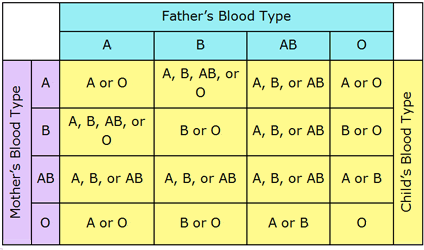Why? Every human has certain rights, and one of those rights is to know who their parents are. They also have the right to know their family's full medical history, as they may be affected by a hereditary disease later in life. Without knowing who their father is, they have lost half of their medical family tree. Before DNA testing was introduced in the late 1970s, there was no way to conclusively determine biological relationships. Scientists used blood typing, serological testing, and HLA testing, but these were not effective in determining relationships.Blood typing methods were difficult to administer and weren't often conclusive. Blood typing is not an accurate method of determing parentage because it eliminates only 30 percent of the entire male population, making it very difficult to determine the father. However, with the advent of DNA testing procedures, biologists and other scientists can now determine genetic relationships and parentage with surprising accuracy. How? The standard procedure is called PCR (polymerase chain reaction). This technique works by taking a small amount of DNA and copying it millions of times to create enough DNA to test. This procedure makes it possible to use small samples from any part of the body. Samples are collected from the mother, the child, and the suspected father, and replicated through PCR. The samples are then checked for similarities. The child's DNA should match parts of the parents'. Results from this technique are very accurate, up to 99.99 percent so. What is PCR? PCR is a process of amplification that relies on thermal cycling, which are repeated cycles of heating and cooling to produce the reaction of DNA melting and enzymatic replication. Short DNA fragments, called primers, contain a sequence that is complementary to the the targeted region of DNA. These primers and DNA polymerase are the key components of amplification. As PCR progresses, the DNA that is generated is used as a template, which sets in motion a chain reaction where the DNA can be exponentially amplified. PCR Procedure
(wikipedia.org) When? DNA fingerprinting was developed on September 10, 1984 by Sir Alec Jefferys. This discovery was eventually used for DNA profiling and parental testing. PCR was developed in 1983 by Kary Mullis.
|
 Possible blood type outcomes for a child with parents of a certain blood type. |